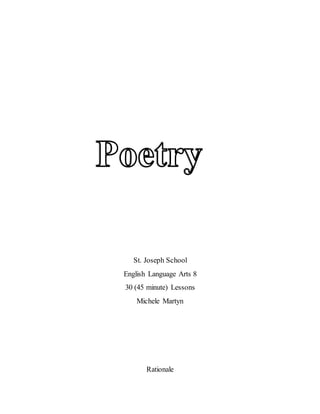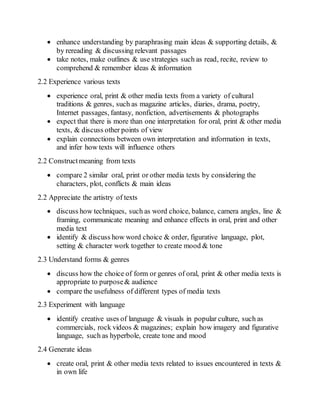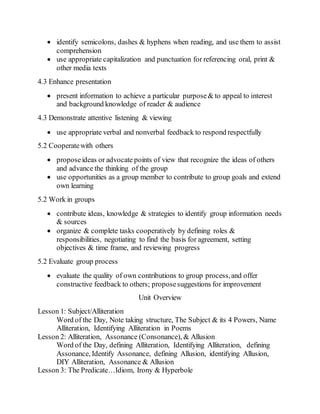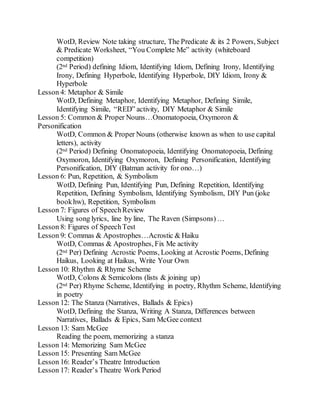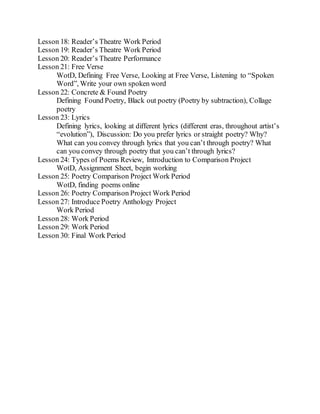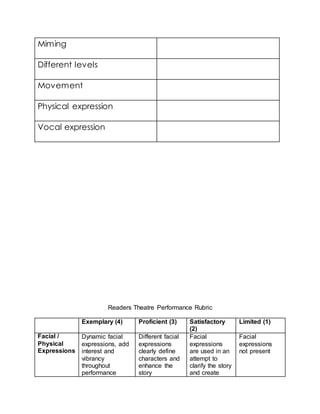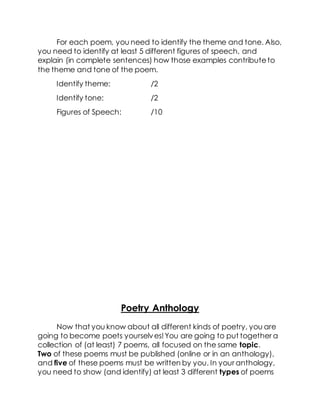This document outlines a 30-lesson unit plan for an 8th grade English Language Arts class. The unit focuses on figures of speech, poetry forms and analysis, and culminates in a reader's theatre performance and poetry anthology project. Key elements include introducing various figures of speech through examples and activities, analyzing poetry including free verse and lyrics, and developing public speaking skills through recitation and group presentations.
